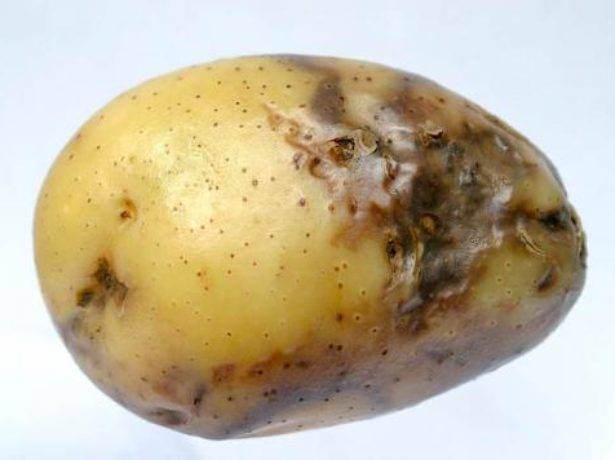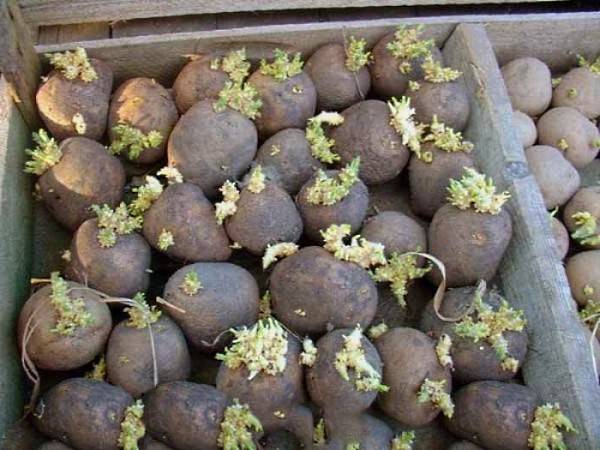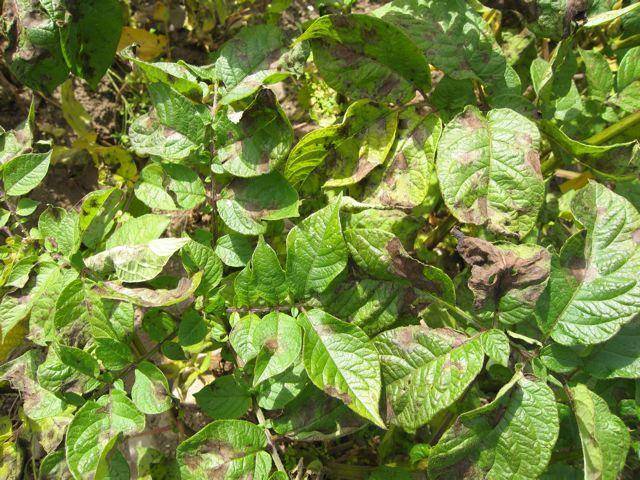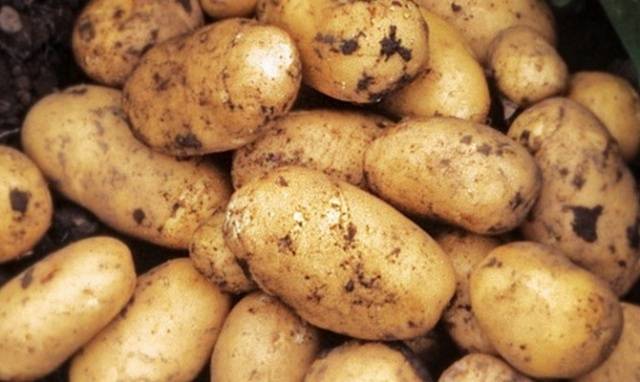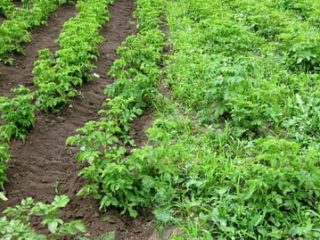Content
Phytophthora is a fungus that infects nightshade plants: potatoes, tomatoes, physalis and eggplants. The disease is most aggressive in foggy, humid weather. Phytophthora manifests itself with large differences between day and night air temperatures. The risk of disease is high with a highly thickened planting of crops. The likelihood of late blight increases when placed next to beds with nightshade plants (for example, tomatoes and potatoes).
The disease manifests itself in the form of indistinct gray-brown spots on the tubers, leaves and stems of the plant. Diseased potatoes should not be eaten.
How to treat potatoes before planting against late blight, how to protect plants at subsequent stages of development - this article is devoted to this.
How to prepare the soil
In winter, at low temperatures, most of the pathogens of phytophthora in the soil die.
It is undesirable to plant potatoes several times in the same place. A break of 2-3 years is optimal.
Good prophylaxis against late blight is soil treatment with Baikal EM-1 or EM-5, this allows you to get rid of the remainder of the fungus in the soil.
Selection rules for planting material
Carefully examine the tubers intended for planting, rejecting those affected by the disease. Before planting, it is necessary to divide the tubers of different varieties in order to place them in different beds. Pay attention to varieties that are immune to late blight infection. These are the following varieties:
- Petersburg;
- Elizabeth;
- The sorcerer.
If you choose these varieties for planting, then you can be calm: fungal infection does not threaten your crops.
How to germinate tubers correctly
Before how to germinate potatoes for planting, wash and dry the tubers. Do not keep them in water or dampness, as they will start to rot. It is advisable to germinate planting material in a well-ventilated room. The room temperature ranges from 10 to 15 degrees. Sprout the tubers by placing them in cardboard boxes or boxes in two layers. Turn the tubers periodically to make the sprouts stronger. Also make sure that the boxes are evenly lit.
Chemical treatment of tubers
Disinfection of planting material reduces the likelihood of potato disease, late blight - including. However, it is necessary to observe safety measures so that, having protected the potatoes from infection, they do not turn it into a product hazardous to health, "stuffed" with chemistry. Therefore, before processing, you need to carefully study the instructions and strictly follow them.
In addition, it is a good protection against potato scab and Colorado beetles. Their disadvantage is the high percentage of toxic substances.
Quite good results are obtained by means of Fitosporin of complex action. Among the diseases of fungal and bacterial origin that the drug suppresses, there is also late blight. An important point, in addition to efficiency, is the safety of the drug and the possibility of its use at all stages of plant development. The dosage of the powder is 20 g per 10 liter bucket.Spraying frequency - 2 weeks.
For the prevention of late blight, planting tubers are sprayed during the germination period and immediately before planting potatoes.
Traditional methods of processing planting material
- Add 1 kg of ash to a 10 liter bucket of water and stir. After placing the potatoes in a string bag, dip them into the solution. We process just before planting.
- Dissolve 1 g of potassium permanganate and a matchbox in 10 liters of water copper sulfate... Spraying tubers before planting protects against fungal infections.
Disinfection mixture based on mineral fertilizers
For 10 liters of hot water.
- Urea - 40 g.
- Copper sulfate - 5 g.
- Potassium permanganate - 1 g.
- Boric acid - 10 g.
- Superphosphate - 60 g.
Mix all ingredients. After cooling, soak the planting tubers in the solution for half an hour. After that, you can dry the potatoes and put them in the boxes for germination.
If late blight is found: folk methods for plant protection
Despite their simplicity, these funds help to effectively fight late blight.
- Garlic infusion... Grind 100 g of garlic and infuse in 10 liters of water for 24 hours. Strain the solution before use. Spray the potatoes every week until the late blight is gone completely.
- Kefir solution... Dissolve 1 liter of peroxidized kefir in a 10 liter bucket of water. Strain the solution. Spray weekly until the fungus is completely removed.
- Bordeaux mix... Dissolve 200 g of copper sulfate in 10 liters of water. The efficiency of the solution increases if boric acid and potassium permanganate are added to the solution.
- Iodine solution... This antiseptic is useful not only for people, but also for plants. For a 10-liter bucket of water, 20-30 drops of iodine are enough. Treatment frequency is every week.
- Ash... Mix 0.5 buckets of wood ash with 10 liters of water. Insist the mixture for 4 days, stir occasionally. All this time, wood ash saturates the water with useful substances. On the 5th day, dilute the mixture to 30 liters, dissolve 50 g of laundry soap in it and go to save the harvest.
- Yeast solution... Dissolve 100 g of yeast in 10 l of slightly warmed water and leave the mixture to ferment for a day. When phytophthora symptoms appear on the bushes, spray the plant with a yeast solution.
Compliance with crop rotation and planting rules, treatment of plants before sowing and at different stages of their development will help avoid fungal damage to potatoes. It is up to you to decide whether to process or not, but, as practice shows, treated tubers give the best yield, and the likelihood of the disease decreases.
